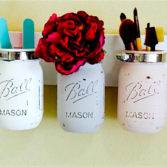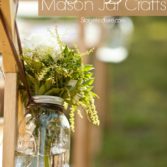When engaged couples are confronted with the task of planning a wedding, they are challenged with a whirlwind of details to coordinate. However, before they buy the aisle runners, wedding favors, bridesmaid dresses and, for many, before they even pick the venue, couples select their color palette that will later guide all decisions. However, if it is you that is currently in this situation, you might be overwhelmed by the numerous color options at your fingertips and may be questioning where to even begin. The season in which you are holding your event can lend itself for inspiration, especially if your nuptials will be outside.
Additionally, keep an eye out for various color combinations in your surrounding world that catch your eye. One aspect that should be factored into your color selection is which hues flatter you. Being that it is your big day, consider whether your blond hair will look too akin to the yellow backdrop or whether the pastel backgrounds will make your skin looked washed out in photos. It is essential that you are aware of how your chosen theme will influence your guests, as colors have the ability to enliven or pacify, rouse deep thought or stimulate social interaction and, if used improperly, even nauseate. Your color palette can be your greatest asset when making your dream wedding a reality.

What colors do you love most?
Image via: Ann Cummings
Warm Colors: Yellows, reds and oranges are more eye-catching than cooler pigments. They have the ability to energize and stir up emotions, which is why these pigments lead to increased hunger and impulsive decisions.
Yellow:
The color of the sun, we obviously associate this color with cheerfulness and happiness. It is also the hue that most stimulates mental activity and increases the amount of serotonin produced. It makes us feel energized, optimistic and have an increased metabolism. However, with all of the benefits of yellow, it should not be used in excess as too much of it came come across as overwhelming and tire the eye (and has childish connotations as well). Furthermore, lacking the emotional interaction of red, yellow in great amounts has the potential to come across as self-centered and can cause agitation.
Red:
The color of raw emotion, strength, romance and danger, red is undoubtedly the boldest of all pigments. If yellow is the color that engages the viewer mentally, then red invigorates the heart (literally) as it quickens the pace and raises blood pressure. The viewer becomes ready for action, so it is wise to use this color in small quantities; it can be effectively used to make particular details become the center of attention, making it prime for bridal bouquets, boutonnieres, or decorative embellishments on the wedding cake. To use red on a grander scale, darken it to masculine shades to communicate deep romance; reversely, tint it with white to create shades of pink, adding femininity to be a color that placates anger and suggests playful innocence.

Is red what you are looking for in your wedding?
Image via: Weddings Romantique
Orange:
Combining red’s fervor with yellow’s brightness, orange is perhaps the most outgoing of all colors, giving it the gift of spurring conversations and creativity. If yellow is the color of the brain and red controls the heart, then orange speaks to the gut, as it causes viewers to behave on intuition. However, because of its strength (and lack of universal appeal), it should be used conservatively or be diluted; like red, darkening it adds masculinity while tinting provides feminine undertones.
Cool Colors: Blues and many shades of green and purple are considered “cooler colors” and have the ability to calm and decrease appetite.
Blue:
The color of the ocean and sky, blue is the most popular color among people. It soothes both the body and the mind, and it lowers heart rate and blood pressure. It is the hue that we trust the most and perceive as the most consistent and stable. However, with its lack of energy, it can make the viewer feel sleepy or depressed; when using it in your wedding, consider a brighter shade, or pairing it with lighter or warmer colors.

Try pairing colors together for a beautiful palette
Image via: The Knot
Green:
Harmonizing blue’s loyalty and yellow’s cheerfulness, green is the color that makes us feel the safest and soothes the eye. Found all throughout nature, we also associate this color with life, freshness, health and endurance. As the hue that is being trumpeted as the color of 2013, it is ideal for couples who want a relaxed, calm wedding; to insert some energy into your palette, consider pairing it with a warmer color like peach.
Purple:
A color of paradoxes that is rarely found in the natural world, purple combines the excitement of purple with the inflection of blue to become the hue of imagination and spirituality. Both regal and forward-thinking, it is ideal for brides who want to add a modernity or whimsicalness to their ceremony. A cooler, introspective color, it can incite sluggishness and depressive emotions if bluish shades are used in large amounts.
Neutral: Though colors like white, black and gray are often considered color, what makes them distinctive is that they are without color and don’t fall on the traditional color wheel. They can be used to lighten and darken other hues, as well as to create sharp contrasts.
White:
Made up of all wavelengths of light, white is associated with cleanness, goodness perfection and, let’s not forget, virginal purity. Devoid of pigment, it can also be seen as bland and detached. Besides being worn by the bride, it is best used to make spaces look larger and make juxtaposed colors distinctive.
Black:
With entirely no light, black is associated with night, power, mourning and secrecy. However, this popular color in the fashion world is emphasized for its slimming capabilities, sleekness and ability to be both bold and mysterious. In wedding décor, black is best used to add touches of drama or chicness to an aesthetic, best for events that are striving to add contemporary flair.

Neutral colors such as black make a great backdrop for other colors
Image via: The Knot
Gray:
A blend of black and white, gray is extremely versatile but is generally seen as poised, unwavering and absent of emotion. Therefore, it is often used to balance the properties of other hues (for example, it softens crimsons and animates mints).
Brown:
Brown is created through a number of different methods that involve combining all three primary colors. Because it is associated with earthiness, we have come to relate it to assuredness, comfort and familiarity. However, it is often thought of as dull, dirty and emotionless. Like gray, it is best used when paired with other colors to help mute their characteristics (pink paired with chocolate is a trendy grouping).
It is advised that couples pick one color that is to be the focal point of the event and around which the other hues can be chosen. If you choose to have more than three colors in your affair, you run the risk of the aesthetic coming across as haphazard and chaotic, which is why it is important to select a venue that matches your palette or vice versa. While traditional color combinations will provide plenty of ideas, embrace the challenge of forging your own path by playing with the endless possibilities; you never know what brilliant visual you’ll stumble upon. Ultimately, it is important to find colors that make you happy, so don’t be afraid to bend the rules to best represent the love the two of you share as a couple.
For more wedding ideas on Stagetecture, click here.
Receive Stagetecture's Daily Lifestyle Ideas
FREE - Daily emails with recipes, home decor, D.I.Y, and lifestyle tips! : ) Who doesn't need help?






Leave a Reply